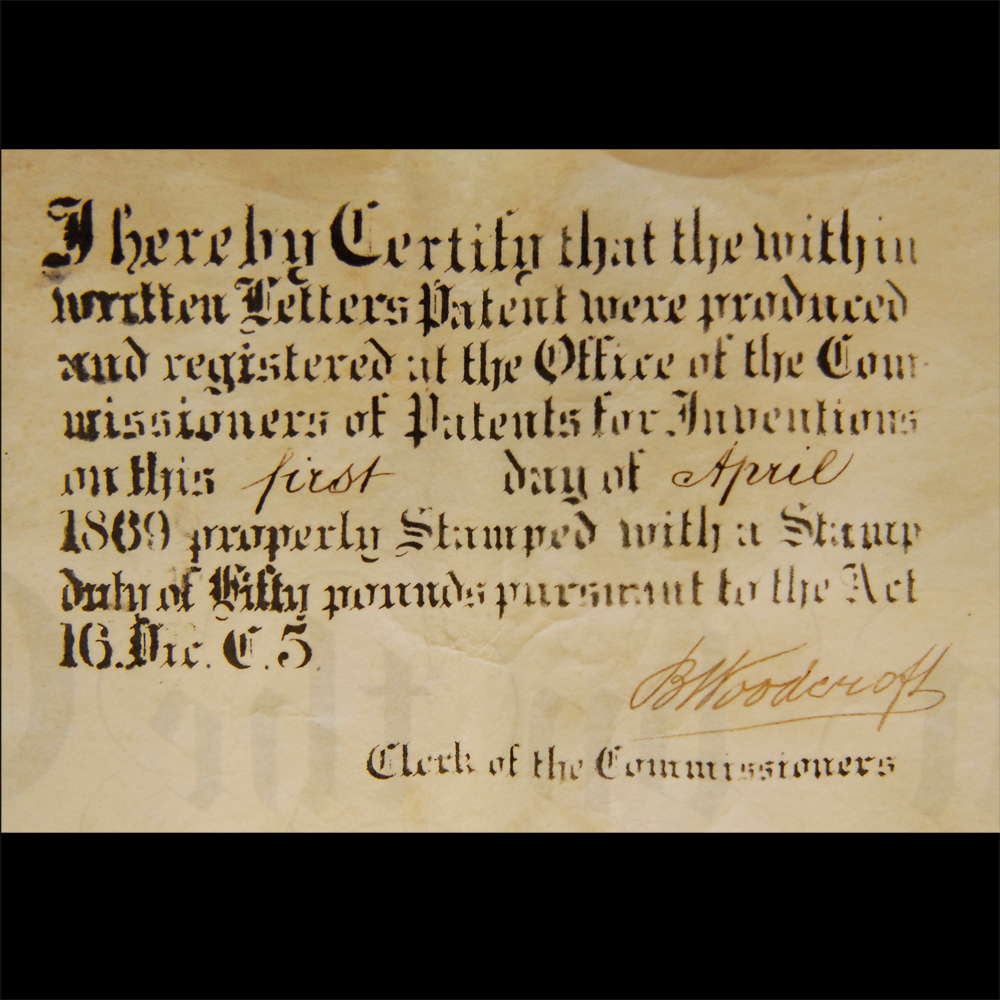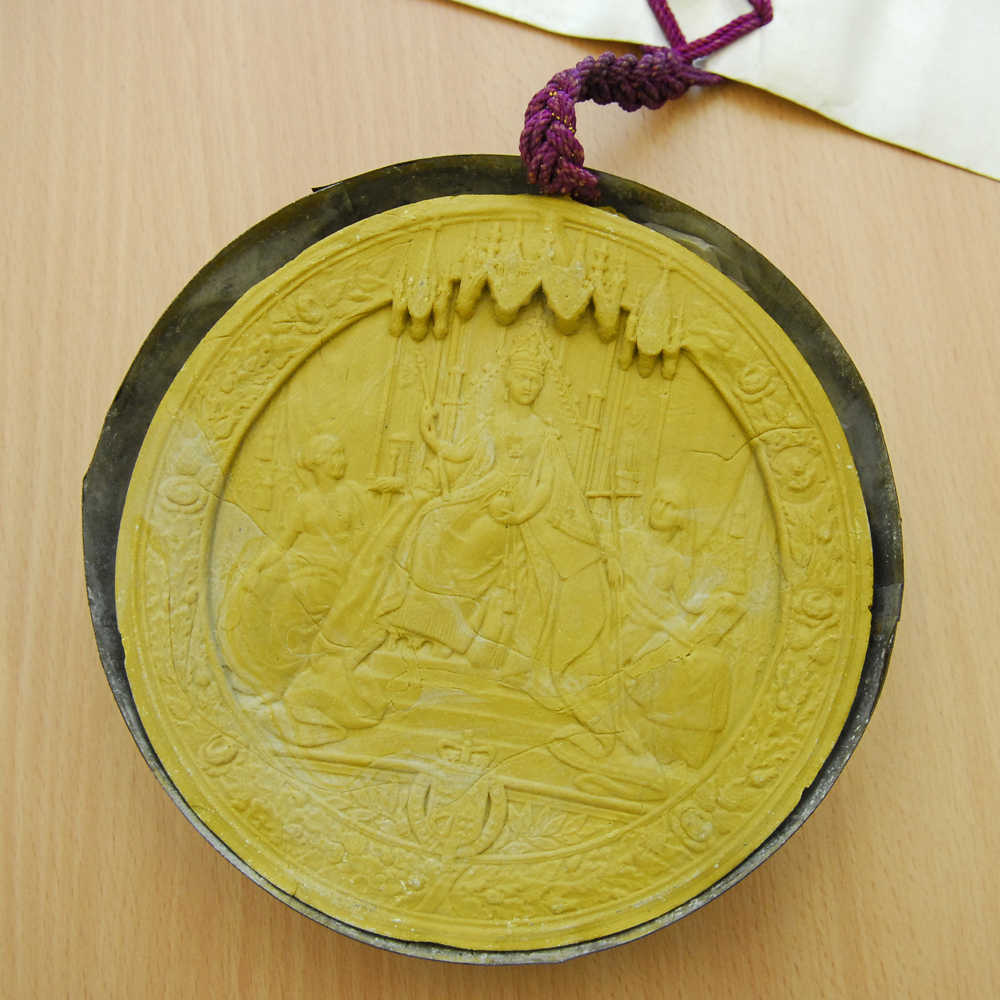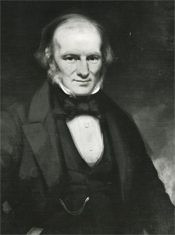This was originally published in October 2011 as part of our Item of the Month series.
Bicentenary celebrations provide a perfect opportunity to reflect on the life and career of individuals who have helped to shape society today. This year has witnessed a series of events to commemorate the birth of one such man: chemist James ‘Paraffin’ Young. Glasgow-born Young was a pioneer of the oil industry. Developing a process of extracting oil from shale rock, his innovations gave rise to the growth of the international shale oil industry and to the establishment of an oil refinery- reputedly the world’s first- in Bathgate, West Lothian.
The son of a carpenter, James attended chemistry evening classes, aged 19, at Anderson’s University, antecedent of the University of Strathclyde, and the following year was appointed laboratory assistant to Chemistry Professor Thomas Graham. So began a lifelong association with the University, culminating with his Presidency in 1868-1877. Whilst at the Andersonian, he formed a lasting friendship with fellow student David Livingstone, financing the latter’s exploratory expeditions to Africa, and funding statues of Graham and Livingstone which today stand in Glasgow’s George Square and Cathedral Square, respectively. A generous benefactor, he endowed the Young Chair of Technical Chemistry, in 1870, the first of its type in the world.
The James ‘Paraffin’ Young Papers (T-YOU) were gifted to the University, by his family, in 1959. This rich and diverse collection spans 1830 to 1958 and includes: diaries and notebooks; correspondence; patents and legal papers; financial papers; technical and scientific notes, educational and personal items. We also hold the extensive Young Collection of books and manuscripts on alchemy and early science, gifted by him, and dating from the 16th century.

A great innovator, Young patented numerous and diverse industrial processes. These include inventions in: distilling; the manufacture of ammonia and the salts of ammonia; the preparation of materials in dying and printing; the production of stannate, stannate of soda and stannate of potash; the treatment of mineral waters; bituminous mineral substances; gas making, and the preservation of vegetable and animal matters. We are fortunate that patents for all these processes form an integral part of the Young collection.
Our selected item for this month is a Letter Patent to James Young for ‘Improvements in Distilling’, No. 992, dated 6 April 1866 and registered 1 April 1869 (ref: T-YOU 3/38). A form of intellectual property, patents consist of a set of exclusive rights granted by a sovereign state to aninventor or their assignee for a limited period of time in exchange for the public disclosure of an invention. Typically, this is the right to prevent others from making, using, selling, or distributing the patented invention without permission. Patents proved vital to the profitability of Young’s work and he embarked on considerable litigation throughout his career against other companies attempting to infringe his rights. This patent is a strikingly beautiful, ornate and vividly illustrated document.

Inscribed on parchment and bordered by graphic imagery, it bears a handsome script and retains its original Great Seal.
This invention proved to be one in a long series of innovations produced by Young. He is perhaps best remembered for his distillation of cannel coal at a low heat, producing a number of useful liquids. These included naptha, lubricating oil and "paraffine oil" which was suitable as a lamp oil, in 1847, and subject of a patent, three years later. Young subsequently entered into partnership with Edward Binney and Edward Meldrum for the manufacture of oils from cannel coal at Bathgate, West Lothian. Their works were completed in 1851, and paraffin fuel and solid paraffin sold from 1856. These were the first truly commercial oil-works in the world.
In 1865, Young bought out his business partners, building additional larger works at Addiewell, Bathgate. The following year he sold the concern to Young's Paraffin Light and Mineral Oil Company. He remained in the company, but withdrew from business. His longstanding involvement with the Andersonian continued though, and he worked with Professor George Forbes on the velocity of light, in 1880. He died three years later, aged 71, in his home ‘Kelly’, near Wemyss Bay, and was buried at Inverkip.
As one of the great innovators and chemists of his age, Young’s legacy is celebrated today. As Professor Kenny Miller, Vice-Principal of Strathclyde comments, ‘His discoveries helped to make oil one of the driving forces of progress over the past century and a half’. In this, and in so many other scientific and industrial endeavours, the work of this truly remarkable man continues to resonate across the world. His achievements will be recognised by his former University, when James ‘Paraffin’ Young is inducted into Strathclyde’s Academy of Distinguished Entrepreneurs at the Enterprise Awards ceremony on 17 November 2011.
Kirsteen Croll, Archives Assistant
